Abstract
Cohen, Paul S. (St. Jude Children's Research Hospital, Memphis, Tenn.), and Herbert L. Ennis. In vivo stability of bacteriophage T4 messenger ribonucleic acid. J. Bacteriol. 92:1345–1350. 1966.—A mutant of Escherichia coli B, defective in its transport and concentration of K+, synthesizes ribonucleic acid (RNA) without the simultaneous synthesis of protein when depleted of this cation. The mutant was used to study the in vivo stability of phage T4 messenger RNA (mRNA) in the presence and absence of K+. Experiments were performed in which the turnover of phage T4 mRNA was determined in infected cells continuously synthesizing RNA and in cells in which RNA synthesis was inhibited by actinomycin D. Phage mRNA was found to be more stable in the absence of K+ than in the presence of either the cation or chloramphenicol.
Full text
PDF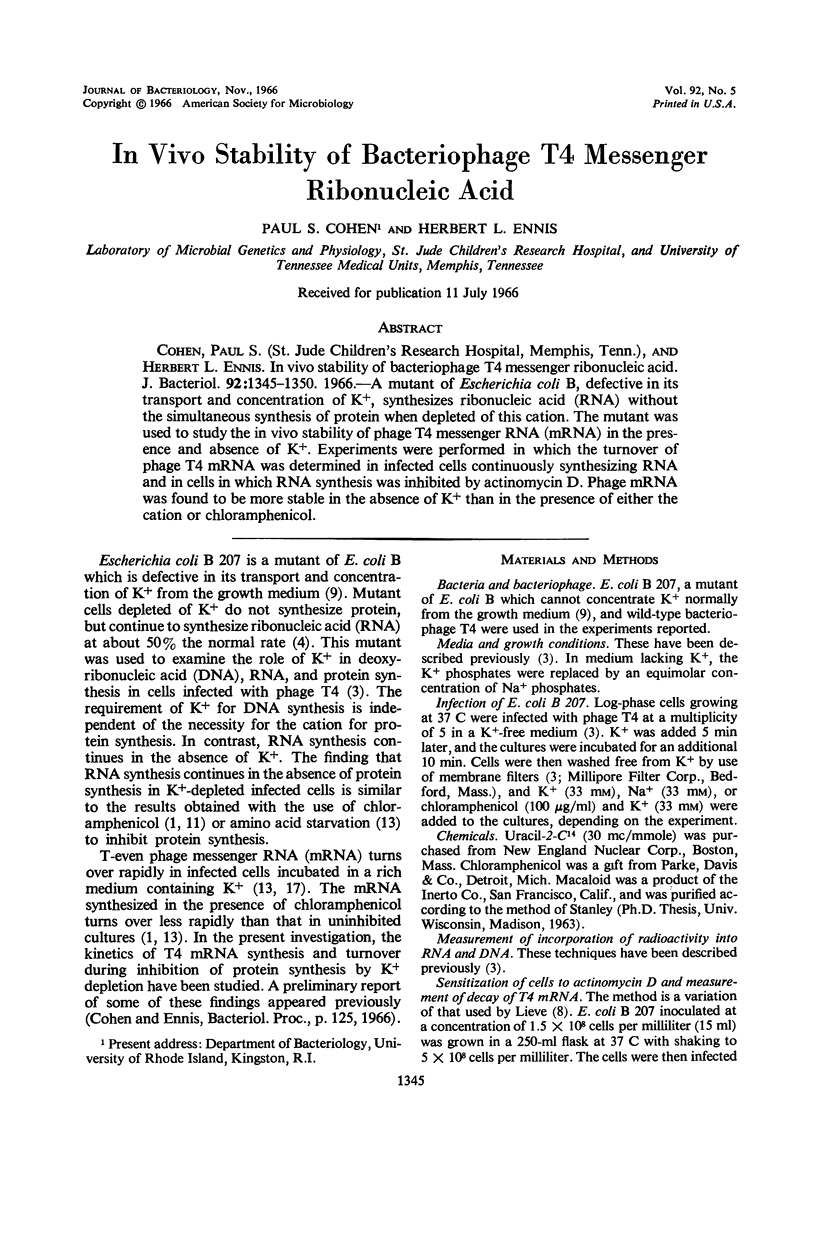
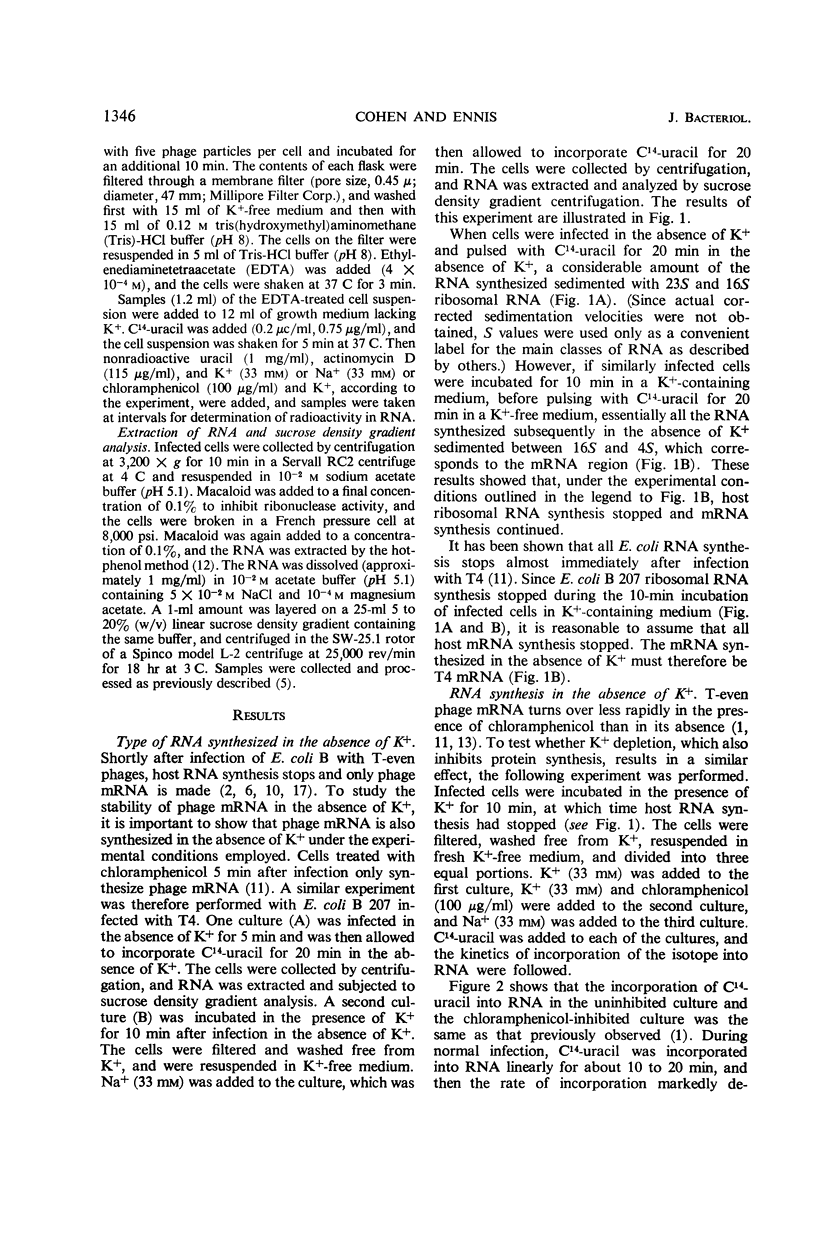
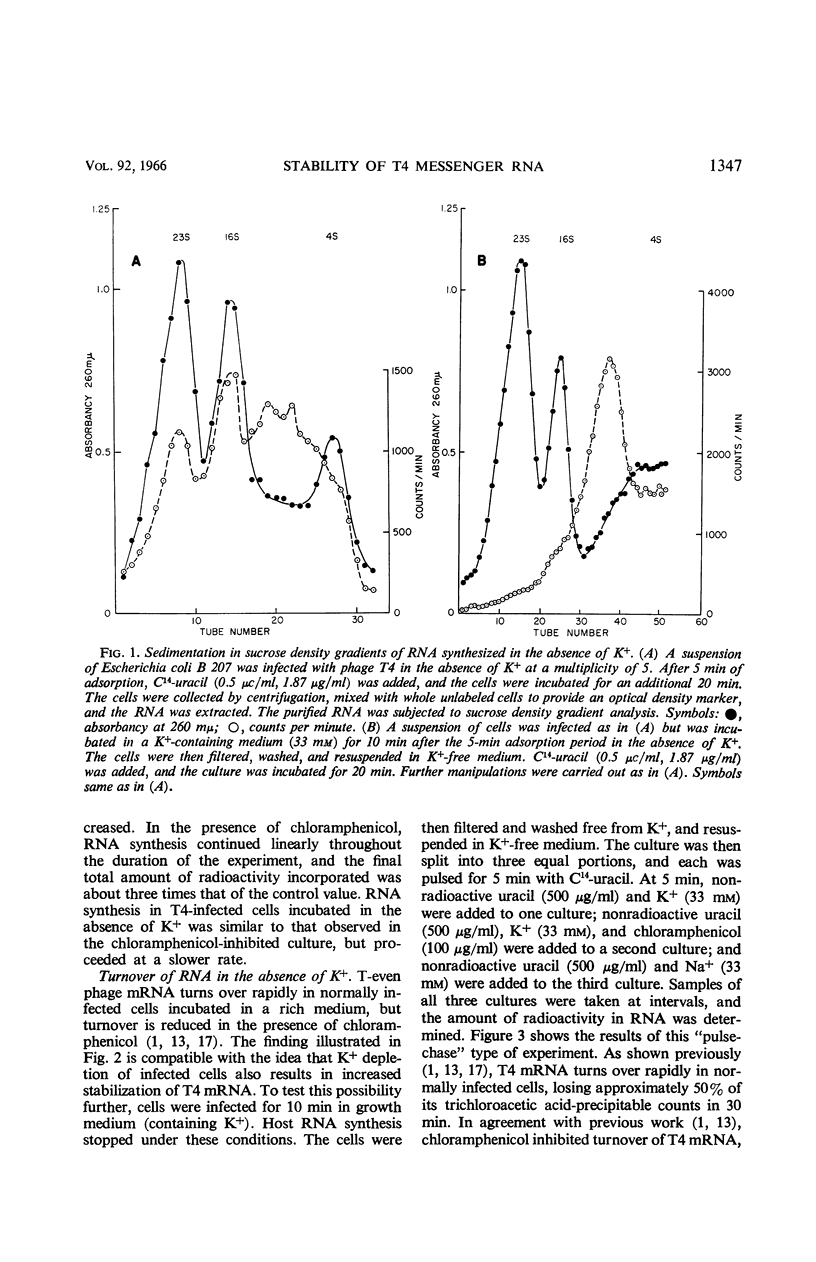
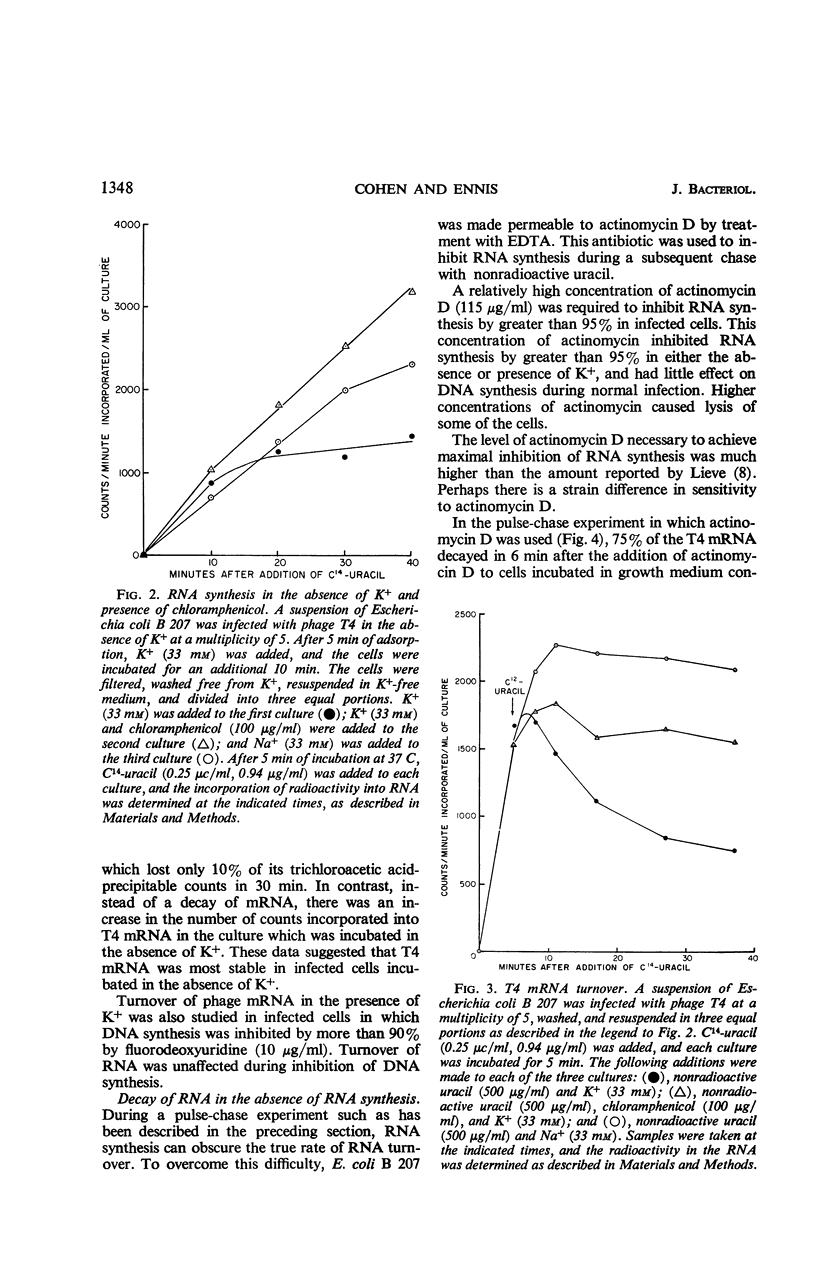
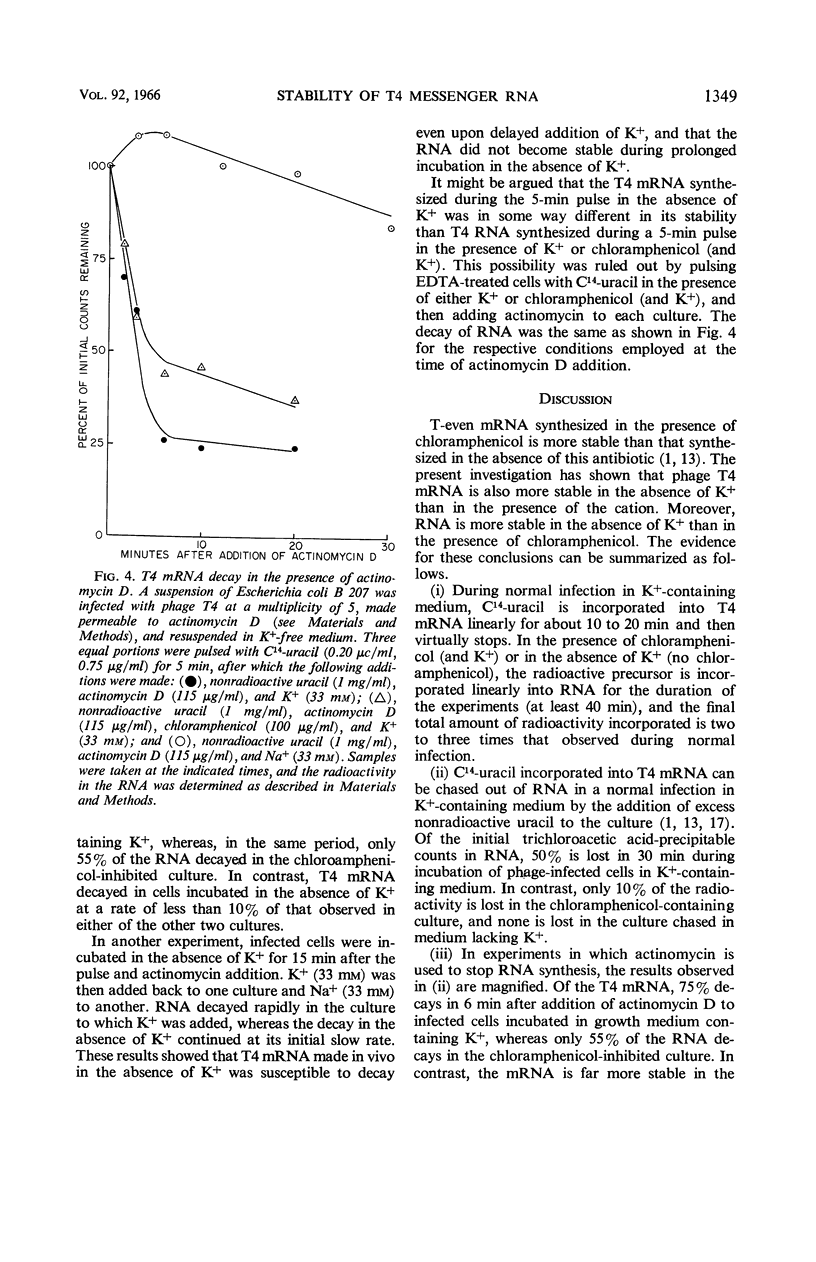
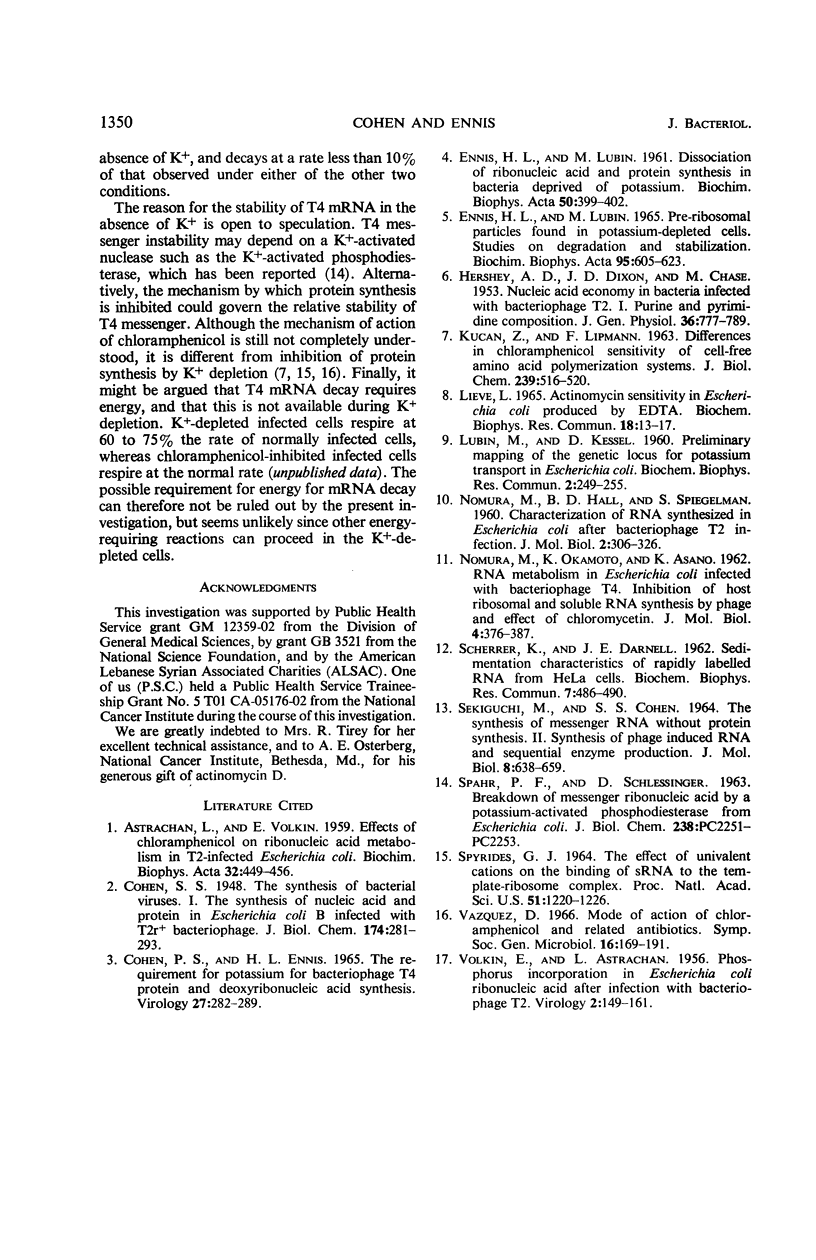
Selected References
These references are in PubMed. This may not be the complete list of references from this article.
- ASTRACHAN L., VOLKIN E. Effects of chloramphenicol on ribonucleic acid metabolism in T2-infected Escherichia coli. Biochim Biophys Acta. 1959 Apr;32:449–456. doi: 10.1016/0006-3002(59)90618-3. [DOI] [PubMed] [Google Scholar]
- Cohen P. S., Ennis H. L. The requirement for potassium for bacteriophage T4 protein and deoxyribonucleic acid synthesis. Virology. 1965 Nov;27(3):282–289. doi: 10.1016/0042-6822(65)90107-8. [DOI] [PubMed] [Google Scholar]
- ENNIS H. L., LUBIN M. Dissociation of ribonucleic acid and protein synthesis in bacteria deprived of potassium. Biochim Biophys Acta. 1961 Jun 24;50:399–402. doi: 10.1016/0006-3002(61)90355-9. [DOI] [PubMed] [Google Scholar]
- ENNIS H. L., LUBIN M. PRE-RIBOSOMAL PARTICLES FORMED IN POTASSIUM-DEPLETED CELLS. STUDIES ON DEGRADATION AND STABILIZATION. Biochim Biophys Acta. 1965 Apr 19;95:605–623. doi: 10.1016/0005-2787(65)90515-0. [DOI] [PubMed] [Google Scholar]
- HERSHEY A. D., DIXON J., CHASE M. Nucleic acid economy in bacteria infected with bacteriophage T2. I. Purine and pyrimidine composition. J Gen Physiol. 1953 Jul;36(6):777–789. doi: 10.1085/jgp.36.6.777. [DOI] [PMC free article] [PubMed] [Google Scholar]
- KUCAN Z., LIPMANN F. DIFFERENCES IN CHLORAMPHENICOL SENSITIVITY OF CELL-FREE AMINO ACID POLYMERIZATION SYSTEMS. J Biol Chem. 1964 Feb;239:516–520. [PubMed] [Google Scholar]
- LEIVE L. ACTINOMYCIN SENSITIVITY IN ESCHERICHIA COLI PRODUCED BY EDTA. Biochem Biophys Res Commun. 1965 Jan 4;18:13–17. doi: 10.1016/0006-291x(65)90874-0. [DOI] [PubMed] [Google Scholar]
- NOMURA M., OKAMOTO K., ASANO K. RNA metabolism in Escherichia coli infected with bacteriophage T4. Inhibition of host ribosomal and soluble RNA synthesis by phage and effect of chloromycetin. J Mol Biol. 1962 May;4:376–387. doi: 10.1016/s0022-2836(62)80018-7. [DOI] [PubMed] [Google Scholar]
- SCHERRER K., DARNELL J. E. Sedimentation characteristics of rapidly labelled RNA from HeLa cells. Biochem Biophys Res Commun. 1962 Jun 4;7:486–490. doi: 10.1016/0006-291x(62)90341-8. [DOI] [PubMed] [Google Scholar]
- SEKIGUCHI M., COHEN S. S. THE SYNTHESIS OF MESSENGER RNA WITHOUT PROTEIN SYNTHESIS. II. SYNTHESIS OF PHAGE-INDUCED RNA AND SEQUENTIAL ENZYME PRODUCTION. J Mol Biol. 1964 May;8:638–659. doi: 10.1016/s0022-2836(64)80114-5. [DOI] [PubMed] [Google Scholar]
- SPYRIDES G. J. THE EFFECT OF UNIVALENT CATIONS ON THE BINDING OF SRNA TO THE TEMPLATE-RIBOSOME COMPLEX. Proc Natl Acad Sci U S A. 1964 Jun;51:1220–1226. doi: 10.1073/pnas.51.6.1220. [DOI] [PMC free article] [PubMed] [Google Scholar]
- VOLKIN E., ASTRACHAN L. Phosphorus incorporation in Escherichia coli ribo-nucleic acid after infection with bacteriophage T2. Virology. 1956 Apr;2(2):149–161. doi: 10.1016/0042-6822(56)90016-2. [DOI] [PubMed] [Google Scholar]


